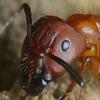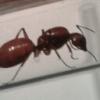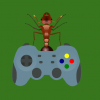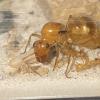Alright, so first of all, sorry if I put this topic in the area, but I have tried searching up Dorymyrmex Bureni, but I don't really find that much about the species. I know that they prefer to live in sandy soil, but that's pretty much it. I can't find that much information about what you should feed them. Also, I don't think there is information on this forum about Dorymyrmex Bureni, except an ant journal somewhere on here. Much help appreciated!!!
- Formiculture.com
- Forums
- Gallery
- Members
- Member Map
- Chat





















